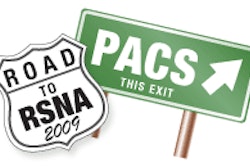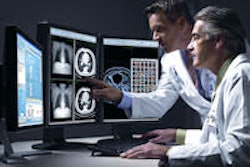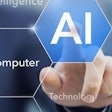CHICAGO - Image viewing applications such as the popular OsiriX software might seem like a natural choice for radiologists seeking to outfit their iPhones for professional use. But other types of medical apps -- and those still to come -- also offer much potential value, according to research presented Monday at the 2009 RSNA meeting in Chicago.
"There are actually a variety of other, different [app] categories that can make our lives easier," said presenter Dr. Trushar Patel of Weill-Cornell Medical College in New York City. "And hopefully in the future we will see that happen."
Apple's iPhone has been immensely popular since its introduction in June 2007, with total worldwide sales of 33.7 million units. As of November 1, the iTunes App Store contained just over 100,000 applications, Patel said.
The research team sought to evaluate the medical applications available in the App Store, with a particular focus on radiology. As of March 31, 2009, there were 303 apps in the "medical" iTunes category. The researchers identified eight medical subcategories for the purposes of the study: viewing applications, communications, business, education, clinical utility, medical reference, and nonradiology,
The 303 medical apps included 66 medical reference apps, 135 nonradiology apps, 40 clinical utility apps, 29 education apps, 16 business apps, 10 communication apps, and three viewing apps. The apps were reviewed by four reviewers based solely on the information gathered from iTunes and were scored on a scale of 0 (not useful) to 4 (useful). Data were also gathered on the apps' cost and release date.
The viewing apps were all given an average rating of 4, while the other apps had varying ratings below 2.
Patel identified a number of notable medical apps in his presentation:
- iChart EMR ($139.99) - A business app that serves as a mobile electronic medical record (EMR) app.
- Merge Mobile (free) - An image viewing app from Merge Healthcare of Milwaukee.
- Case Logs ($19.99) - A nonradiology app for case tracking.
- Muscle Head and Neck System (free) - A medical reference for the muscles of the head and neck system.
- Simon Webb Emory/Grady Paging ($0.99) - A paging system.
- MyDictation (free trial use) - This communication app offers voice recording and dictation capability.
- DoseCalc ($1.99) - A clinical utility app, DoseCalc provides calculation of parameters associated with radioisotopes.
- Procedures Consult ($39.99) - This clinical utility app provides multimedia training for procedures.
- Radiology Teaching File ($4.99) - An educational app designed to aid in preparation for board exams.
- Rad Estimator ($19.99) - This business app provides estimates for radiology equipment.
The iPhone offers a number of advantageous properties, including its GPS location capability, compass, and accelerometer, Patel said. Video and voice recording functionality can be utilized by third-party applications, and instant communication is possible via text messaging or Internet access, he said.
In the future, Patel and his colleagues feel medical applications will be directed in a number of areas, including remote viewing and quality control. For example, cases could be viewed on the iPhone for instant on-call support or for collaboration, Patel said.
Also, users can employ the iPhone for remote quality control of images while the patient is in the scanner, or for remote selection of slices for advanced imaging (such as head CT angiography or CT urograms), according to Patel.
Communication may also be a key area for iPhone medical apps in the future. This could include hospital-based systems for communicating with physicians, including instant reporting and feedback, as a read-back verification device (perhaps most useful for ER physicians not continually at a computer workstation), as a portable dictation system, and for providing teleconferencing capabilities, Patel said.
Localization-based services may also find a niche, such as in utilizing position to assist in patient tracking and transport. The concept of augmented reality may also take shape in the future, according to Patel.
The iPhone is capable of providing augmented reality, which involves superimposing computer information on a real-time environment. For example, the Yelp iPhone application superimposes restaurant and shop information on a real-time iPhone camera view of a street. Another app, Layar, offers a browser-based augmented reality.
This augmented reality technology has not yet been fully explored in healthcare, but offers a lot of potential, according to Patel.
For example, an iPhone could potentially be used by emergency room physicians as they palpate a patient who had been imaged. They could point the iPhone over a tender area, bringing up the images for that specific location, he said.
By Erik L. Ridley
AuntMinnie.com staff writer
November 30, 2009
Related Reading
Handheld devices show promise for patient education, June 8, 2009
Smartphone vs. PACS: Smartphone does just fine for skeletal trauma, December 4, 2008
PDAs may be suitable for viewing trauma head CT, January 25, 2008
Consumer displays compare well with medical-grade displays, November 27, 2007
Radiologists slow to adopt PDAs for practice, October 12, 2005
Copyright © 2009 AuntMinnie.com




















